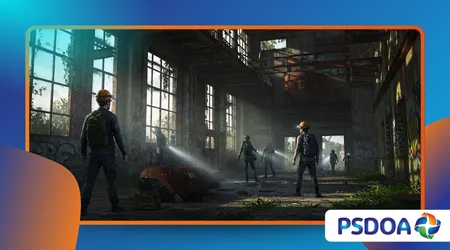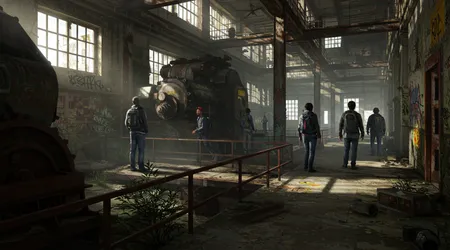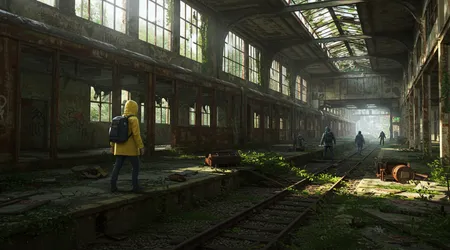The Hidden World of Urban Exploration (Urbex) Subculture

Urban exploration subculture thrives in the shadows of cities, where adventurers uncover forgotten spaces.
Anúncios
These explorers, known as urbexers, navigate abandoned buildings, tunnels, and rooftops, seeking history, beauty, and adrenaline.
In 2025, this niche community grows, fueled by social media and a hunger for authentic experiences. Why do people risk danger to explore decay?
This article dives into the motivations, ethics, and impact of urbex, revealing a world both thrilling and controversial.
From crumbling factories to hidden subway stations, urbexers redefine how we see urban landscapes. Join us to uncover their stories, challenges, and the cultural significance of this enigmatic subculture.
Anúncios
The Allure of the Abandoned
What draws people to places society forgot? Urban exploration subculture taps into a primal curiosity about the past.
Abandoned sites hold stories factories whisper of industrial booms, hospitals echo with lost lives. Urbexers seek these narratives, finding beauty in decay.
The thrill of trespassing adds adrenaline, making each step a rebellion against the mundane.
Instagram and YouTube amplify this allure, showcasing haunting visuals. In 2025, urbex content garners millions of views, turning explorers into influencers.
++The DIY Zine Culture That Refuses to Die
Yet, the real draw remains personal discovery, not fame. For example, an urbexer named “Ghost” found a 1920s theater in Detroit, its stage frozen in time, sparking a viral post.
This subculture rejects polished modernity, embracing raw, unfiltered spaces. It’s like diving into a time capsule, where every artifact tells a tale.
Urbexers don’t just explore they connect with history, challenging our throwaway culture. Their passion questions: what do we lose when we abandon places?

The Ethics of Trespassing
Trespassing defines urban exploration subculture, but is it justified? Urbexers argue they preserve history by documenting forgotten sites.
Critics, however, see vandalism or reckless endangerment. The debate hinges on intent exploration versus exploitation. Most urbexers follow a code: “Take nothing, leave no trace.”
Yet, ethical lines blur. Some break locks or tag walls, damaging sites. A 2023 study by the University of London found 45% of urbexers faced legal issues, highlighting risks.
Responsible urbexers, like Clara, a London-based explorer, share photos anonymously to avoid site looting. She once mapped a derelict asylum, aiding historians.
Also read: Exploring the Furry Fandom Beyond the Stereotypes
The subculture grapples with visibility. Social media exposes locations, inviting vandals or authorities. Ethical urbexers obscure coordinates, protecting sites.
This balance between sharing and safeguarding shapes their community, making ethics a constant negotiation.
Respect for spaces varies. Some urbexers treat sites like sacred relics, others exploit them for clout.
The tension between preservation and exposure defines their moral landscape. Can urbexers share their passion without destroying what they love?
The Risks of Technology
Technology transforms urban exploration subculture, offering tools like drones and GoPros. Drones capture inaccessible rooftops, while cameras document every detail.
In 2025, apps like UrbEx Map crowdsource locations, making exploration more accessible. Yet, technology also alerts authorities, tightening security at popular sites.
Social media’s a double-edged sword. It builds communities but risks oversharing. For instance, a Manchester urbexer, Tom, posted a tunnel video, leading to its closure.
GPS trackers help navigation but leave digital footprints. Urbexers must use tech wisely, balancing innovation with discretion.
Read more: Why Vaporwave Became the Soundtrack of Internet Nostalgia
Tech also enhances storytelling. Virtual reality lets fans experience sites remotely, reducing physical trespassing. Yet, purists argue this dilutes the thrill.
Technology’s role is undeniable, but it challenges the subculture’s underground ethos. Does it democratize exploration or erode its soul?
Community and Identity
At its core, urban exploration subculture is about connection. Urbexers form tight-knit groups, bonded by shared risks and discoveries.
Online forums like Reddit’s r/urbanexploration buzz with tips and tales. In 2025, meetups in cities like Berlin and Tokyo strengthen these bonds, fostering a global network.
Identity drives this community. Urbexers adopt pseudonyms, like “Shade” or “Echo,” reflecting their rebel spirit.
For many, urbex is a rejection of mainstream norms, a way to claim agency in urban jungles. Take Mia, a Sydney explorer who found solace in abandoned warehouses after losing her job.
This subculture offers belonging for outsiders. It’s a mosaic of misfits artists, historians, thrill-seekers united by curiosity.
Yet, cliques form, with gatekeepers shunning “newbies.” The community’s strength lies in its diversity, but inclusivity remains a challenge.
The Cultural Impact
Urban exploration subculture reshapes how we view cities. By highlighting decay, urbexers critique urban sprawl and gentrification.
Their photos spark debates on preservation, inspiring artists and filmmakers. In 2025, urbex-inspired exhibitions pop up in galleries from London to São Paulo.
Urbex challenges disposable culture. A derelict school in Chicago, explored by “Viper,” led to a community push for its restoration.
Such stories show urbex’s power to influence policy. The subculture’s lens raw, unpolished offers a counterpoint to sanitized city narratives.
It’s like an urban archaeology, unearthing hidden truths. Urbexers remind us that cities are layered, not linear.
Their work questions progress: what’s the cost of forgetting our past? This cultural ripple effect makes urbex more than a hobby it’s a movement.
The Future of Urbex

Where is urban exploration subculture headed? In 2025, stricter laws and AI surveillance challenge explorers.
Sites dwindle as cities redevelop, pushing urbexers to rural or international locations. Yet, the community adapts, using encrypted apps to share tips discreetly.
Sustainability emerges as a focus. Urbexers advocate for site preservation, partnering with historians.
For example, a Paris group mapped catacombs, aiding archaeological research. The subculture’s future lies in balancing thrill with responsibility, ensuring sites endure.
Virtual urbex gains traction, with VR tours reducing physical impact. But purists resist, valuing real-world risks.
The subculture’s evolution hinges on innovation and ethics. Will urbex remain a defiant art or become mainstreamed, losing its edge?
Real-World Examples and Data
The urban exploration subculture thrives on real stories. Consider “Nix,” a Berlin urbexer who explored a Soviet-era bunker, uncovering Cold War relics.
His photos, shared anonymously, inspired a documentary. Another example: “Lark,” a Tokyo explorer, mapped an abandoned theme park, sparking local nostalgia.
Data underscores urbex’s reach. A 2023 University of London study surveyed 1,200 urbexers, revealing key trends:
| Aspect | Statistic |
|---|---|
| Average age | 28 years |
| Gender split | 65% male, 35% female |
| Legal issues faced | 45% reported fines or arrests |
| Primary motivation | 72% cited “historical curiosity” |
This table highlights the subculture’s diversity and risks. The statistic 45% facing legal issues grounds the ethical debate, showing real consequences.
Conclusion
The urban exploration subculture is a paradox defiant yet delicate, visible yet hidden. In 2025, it captivates a world craving authenticity, offering a lens into forgotten spaces.
Urbexers are storytellers, preserving history while navigating ethical and legal tightropes. From abandoned theaters to crumbling bunkers, their discoveries challenge how we define progress.
This subculture isn’t just about trespassing; it’s about reclaiming narratives society discarded.
As cities evolve, urbexers remind us to look back, to question, to explore. Will you dare to see the hidden world they uncover?
Frequently Asked Questions
What is urban exploration?
It’s the exploration of abandoned or hidden urban spaces, driven by curiosity, history, or thrill. Urbexers document sites, often trespassing.
Is urbex illegal?
Often, yes. Trespassing laws vary, but many urbexers face fines or arrests. Ethical explorers minimize impact to avoid legal trouble.
How do urbexers find locations?
Through research, forums, or apps like UrbEx Map. Experienced urbexers rely on historical records or local tips, avoiding overshared sites.
Is urbex dangerous?
Yes. Risks include structural collapse, asbestos, or encounters with authorities. Urbexers use safety gear and plan meticulously to mitigate hazards.
